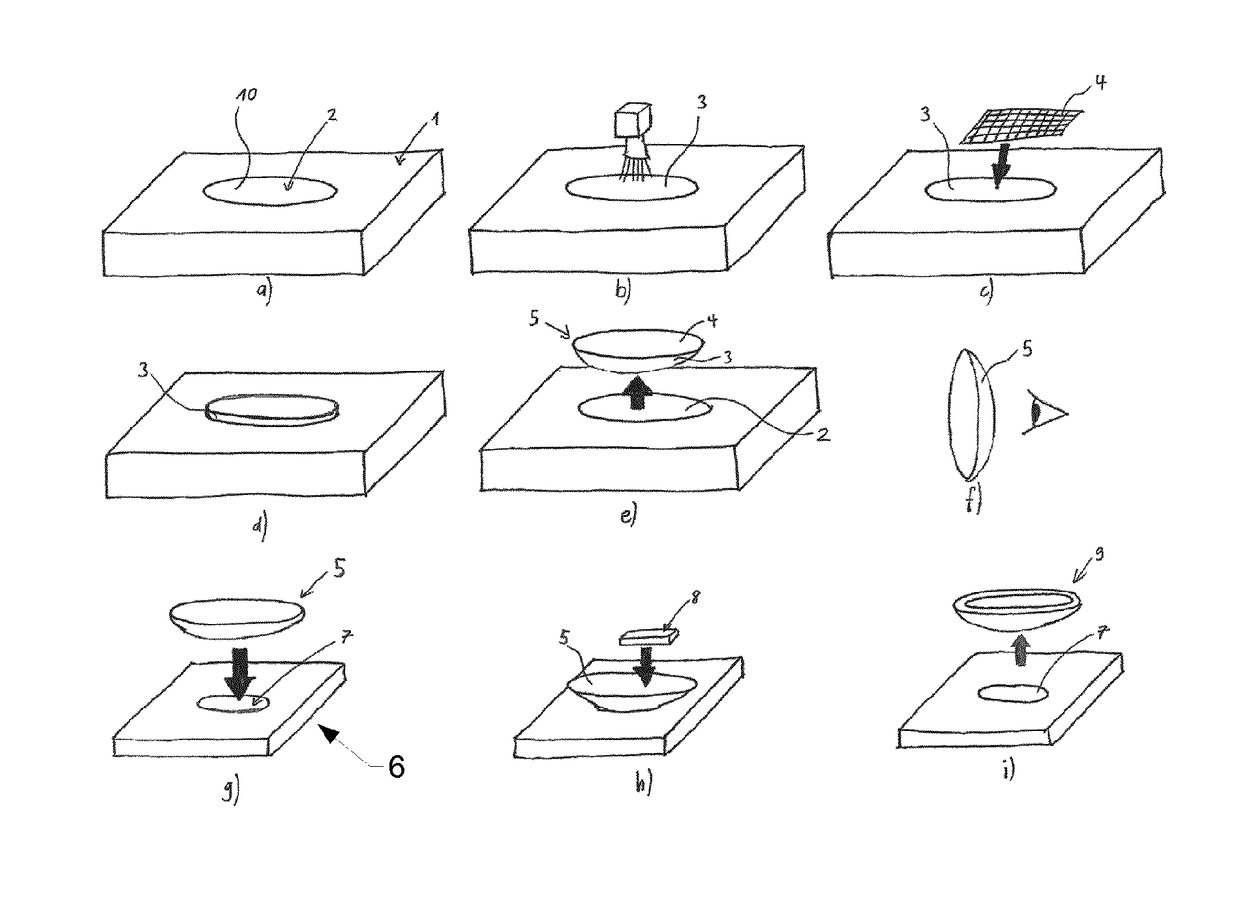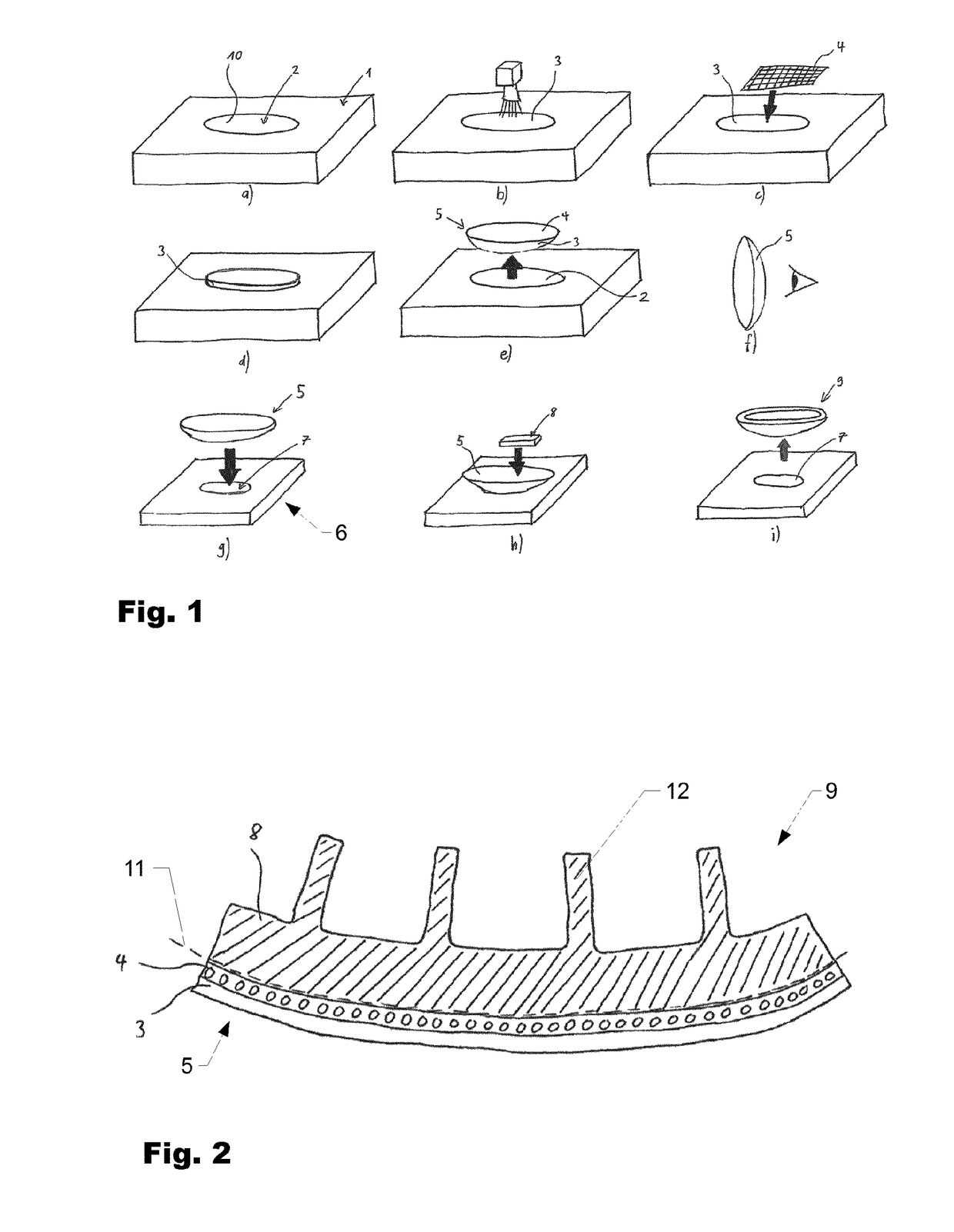Method for producing components from fiber-reinforced composite material
a composite material and fiber reinforcement technology, applied in the direction of synthetic resin layered products, transportation and packaging, other domestic articles, etc., can solve the problems of increasing production costs, increasing production costs, and difficulty in reducing the elimination rate at the end of the production line, so as to reduce the elimination rate and reduce the elimination rate , the effect of reducing the elimination ra
- Summary
- Abstract
- Description
- Claims
- Application Information
AI Technical Summary
Benefits of technology
Problems solved by technology
Method used
Image
Examples
Embodiment Construction
[0034]A method according to the invention is explained in more detail with reference to FIG. 1. Put simply, the method according to the invention shown comprises the following method steps: in a first step (cf. FIG. 1a) a molding tool 1 having a cavity 2 is provided. The cavity 2 has a shaping wall 10.
[0035]If required, as shown in FIG. 1b, a surface layer 3 is applied to the wall 10 (or to parts thereof), so that said surface adheres temporarily to said wall. Depending on the embodiment, a plurality of plies of surface layers may even be applied. The one or more surface layers 3 may consist, for example in their raw state, of a liquid and / or a powder and / or a film. Generally speaking, these reach their desired properties only as a result of processing. In one embodiment, the surface layer 3 is treated by the action of electromagnetic waves prior to application of a first ply of fibers. In particular, provision is made for the use of radiation at wavelengths in the infrared or ultra...
PUM
| Property | Measurement | Unit |
|---|---|---|
| conductive | aaaaa | aaaaa |
| adhesion | aaaaa | aaaaa |
| color | aaaaa | aaaaa |
Abstract
Description
Claims
Application Information
 Login to View More
Login to View More - R&D
- Intellectual Property
- Life Sciences
- Materials
- Tech Scout
- Unparalleled Data Quality
- Higher Quality Content
- 60% Fewer Hallucinations
Browse by: Latest US Patents, China's latest patents, Technical Efficacy Thesaurus, Application Domain, Technology Topic, Popular Technical Reports.
© 2025 PatSnap. All rights reserved.Legal|Privacy policy|Modern Slavery Act Transparency Statement|Sitemap|About US| Contact US: help@patsnap.com


